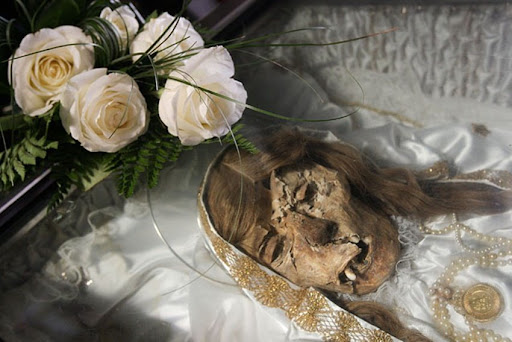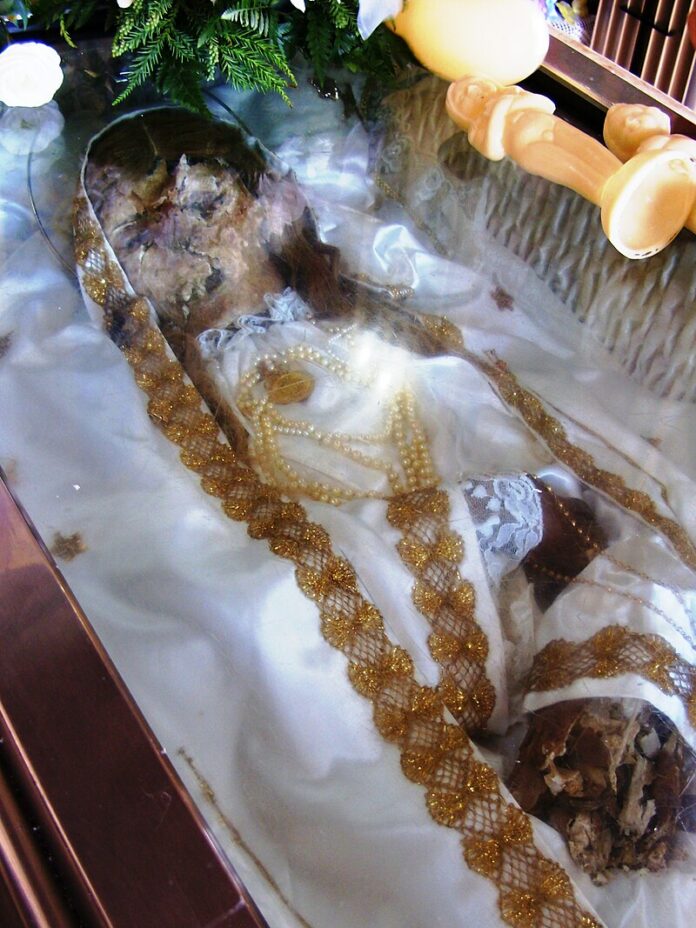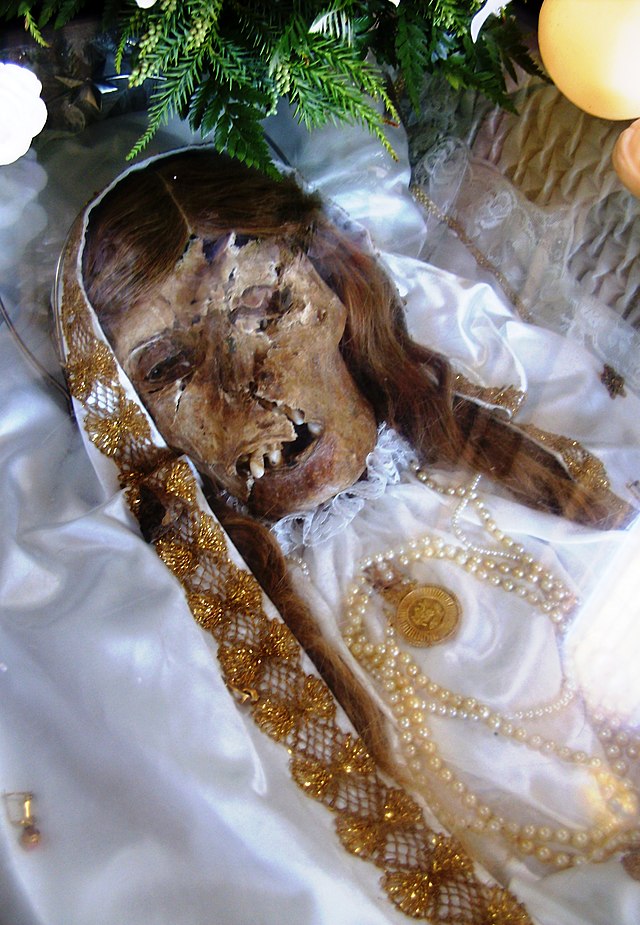Arcozelo is a destination on the religious and devotional itinerary for people from all around, who flock there to seek the graces and protection of the “little saint” of Arcozelo, Maria Adelaide de Sam José e Sousa. Regarded with great veneration by the local people, Maria Adelaide passed away in a state of sanctity and now lies in public display in her reliquary chapel, making it one of the largest pilgrimages in northern Portugal.
The Life and Legacy of “Santa” Maria Adelaide

Among the unrecognized cults by the Church, the “Santa” Maria Adelaide in Arcozelo is one of the most well-known, perhaps the largest in Portugal. Maria Adelaide de Sam José e Sousa was born in the city of Porto in 1835. Her story is told by Augusto Gomes dos Santos, who became fascinated by her case and initiated investigations, publishing the book “The ‘Santa’ Maria Adelaide,” which narrates her life.
Maria Adelaide entered the Corpus Christi Convent in Vila Nova de Gaia, where she fell ill. She then moved to the Largo do Moinho de Vento in Porto, but her condition worsened, and the doctor advised her to go to a coastal area with pine trees and eucalyptus; Arcozelo proved to be the most suitable place. She arrived in May 1876 and improved. She made lace and pastries, using the proceeds to assist many poor people in Arcozelo. She loved children, providing them with daily bread, sweets, clothes, and catechism. She was always ready to reconcile estranged families. However, the illness that had brought her there worsened due to a severe cold, and she passed away on September 4, 1885.
The Incorrupt Body and Public Veneration

On February 23, 1916, the coffin was exhumed as the grave had been sold. When opened, “they found the body of a lady completely intact, with the clothes covering it also intact, and it exuded a strong scent of roses.” The body was “covered with stone carbonate and sprinkled with nitric acid or aqua fortis” and was buried in the common grave, near the ossuary. Secrecy was requested, but some of the boys who helped with the work spoke about it.
“On Friday morning, the 25th, in Arcozelo and the neighboring parishes, a great cry was heard, inciting the people to go and help exhume a saint, while the bells were ringing the alarm.” On the 27th, “with a hoe in hand, ‘Tia’ Joaquina Rainha and ‘Tia’ Rosa Caleira jumped over the back wall of the cemetery and started digging to uncover the grave where the little saint had been placed three days earlier.” Maria Adelaide de Sam José e Sousa was retrieved; her body remained incorrupt.
The site was evacuated, the saint was washed, and “inside a chapel, they dressed her in new clothes and placed her in a casket.” She was then displayed, and in an orderly manner, everyone was able to see her mortal remains. “They sprinkled her with powdered lime, and the casket was closed.” Five years later, during the translation to the new chapel, the casket was opened again, and the body, somewhat burned by the products added to it, remained incorrupt and still emitting a strong scent of roses. Maria Adelaide could now be publicly displayed; on May 17, 1924, a Saturday afternoon, her body was translated to the new chapel.
The Shrine and Museum
For the people, there were two things that made her a saint: her kindness and the fact that her body remained intact, as Augusto Gomes dos Santos states. After several attempts and robberies, on May 25, 1983, a man entered the chapel, carrying a bouquet of flowers and a sack; “only when he reached the tomb did he take out of the sack a hammer with which he tried to destroy the little saint.” Today, in a deformed appearance, in a very rich chapel, “Santa” Maria Adelaide is on display; in a marble tomb, covered with glass, one has to climb three marble steps to see her. Behind the tomb, there is an altar with images of saints. Next to the chapel is the House of Miracles, where candles, crosses, key chains, rosaries, and postcards are sold.
Outside, the cemetery extends, and at the back, the museum displays some of the objects offered to the saint in gratitude for the graces received: more than 600 wedding dresses, baptismal and communion outfits, coins and banknotes from more than 25 countries, handicrafts, ceramics, necklaces, rings, chains, candles, wax, prostheses, cut hair, watches, football players’ jerseys, and a world of photographs with descriptions of miracles and expressions of gratitude. We accept as a fait accompli the veneration; it deserves respect because it is not imposed, not mandatory, not legalized nor illegalized – it has to do with the personal convictions of each individual.
The pilgrimage to Arcozelo and the veneration of “Santa” Maria Adelaide represent a remarkable religious and cultural phenomenon in northern Portugal. Despite the lack of official recognition by the Church, the devotion to this revered figure has endured, drawing countless individuals seeking her graces and protection. The story of Maria Adelaide’s life, the preservation of her incorrupt body, and the shrine that has developed around her legacy reflect the deep-rooted beliefs and traditions of the local people. This unique pilgrimage site, with its museum and relics, continues to captivate visitors and serves as a testament to the enduring power of faith and the human desire to find solace in the divine.

